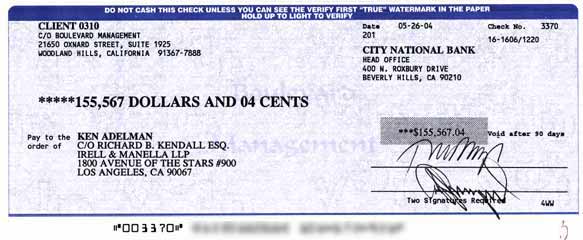Almost anything can be uploaded to the internet, and in the growing web, one photo may seem like a normal photo.
That, until someone says something otherwise, and makes other notice.
Barbara Joan "Barbra" Streisand is a famous singer, actress and director from the U.S.. With a career spanning for decades, she achieved successes in many parts of her works.
But apart from that, she's also known for "helping" the creation of the 'Streisand effect'.
This happened after a photo was uploaded to the internet. Streisand desperately wanted it removed, and attempted to earn money along the way.
This backfired, badly.

It all began when Barbra Streisand discovered in 2003 that an aerial photograph of her California beach house was among 12,000 photos uploaded to the internet as part of a collection by Kenneth Adelman for California Coastal Records Project.
The photos were uploaded to a website, in order to show the public an illustration of coastal erosion. The photos were also intended to influence government policymakers.
As a celebrity, Streisand demands privacy.
And using the First Amendment right of freedom of speech, she considered this photo a violation to her rights, and that he though she could do something about it.
Streisand who wanted the photo to be removed from the internet, filed a lawsuit to sue photographer Kenneth Adelman and the website Pictopia.com, and demanded $50 million in damage.
The lawsuit sought to remove "Image 3850", an aerial photograph in which Streisand's mansion was visible, from the publicly available California Coastal Records Project.
California Coastal Records Project was offended by this.
"We refuse to be intimidated by these tactics, which would undermine our constitutional protection of free speech and which would compromise the integrity of this historical and scientific database," it said on its own web page. "It is not possible to provide the public with a complete record without the photographs of the coast that happen to include Ms. Streisand's estate. We do not believe in giving special treatment to wealthy coastal land owners."
Instead of getting what she wanted, the suit was quickly dismissed, and that Streisand was ordered to pay Adelman's legal fees.

And what happened next, devastated her.
"Image 3850" had only been downloaded four times on the website when Streisand first found it.
Then, prior to the lawsuit, the photo was only downloaded six times, two of those were downloaded by Streisand's attorneys.
But since the case was publicized, public awareness of the case led to more than 420,000 people visiting the site over the following month, most of which were only there to download the said photo.
It was only two years later, that Mike Masnick from Techdirt named the phenomenon the "Streisand effect," naming it after the Streisand incident.

When someone wants to hide, remove, or censor information on the internet, they often have to to this through cease-and-desist letters, to ensure that things are done legally.
But the Streisand effect shows that instead of having the information suppressed, the information will even more more publicity.
In this case, Barbra Streisand is a famous person, and her attempt to remove something she considered private, inadvertently attracted media attentions.
"How long is it going to take before lawyers realize that the simple act of trying to repress something they don't like online is likely to make it so that something that most people would never, ever see (like a photo of a urinal in some random beach resort) is now seen by many more people? Let's call it the Streisand Effect," he said.
The term Streisand effect was coined to refer to an attempt to censor information which unintentionally publicizes that information.
The Streisand effect is an example of psychological reactance, in which depicts a reaction when people are originally unaware that something is being kept from them.
They are significantly more motivated to access that something when and spread that information, when they finally know the truth, or know that they've been lied on.

The term Streisand effect was coined to refer to an attempt to censor information which unintentionally publicizes that information.
The phenomenon is based on the curious nature of humans.
And because this happened on the internet, users of the internet are efficient copying machines. Sooner or later, things will definitely propagate.
The irony of the internet is that when someone want to be famous, they may fail. But if they want to erase themselves, they may find themselves under the spotlight.
And because it's the internet, once it's under the spotlight, that information can never be erased.
Evidence will linger.